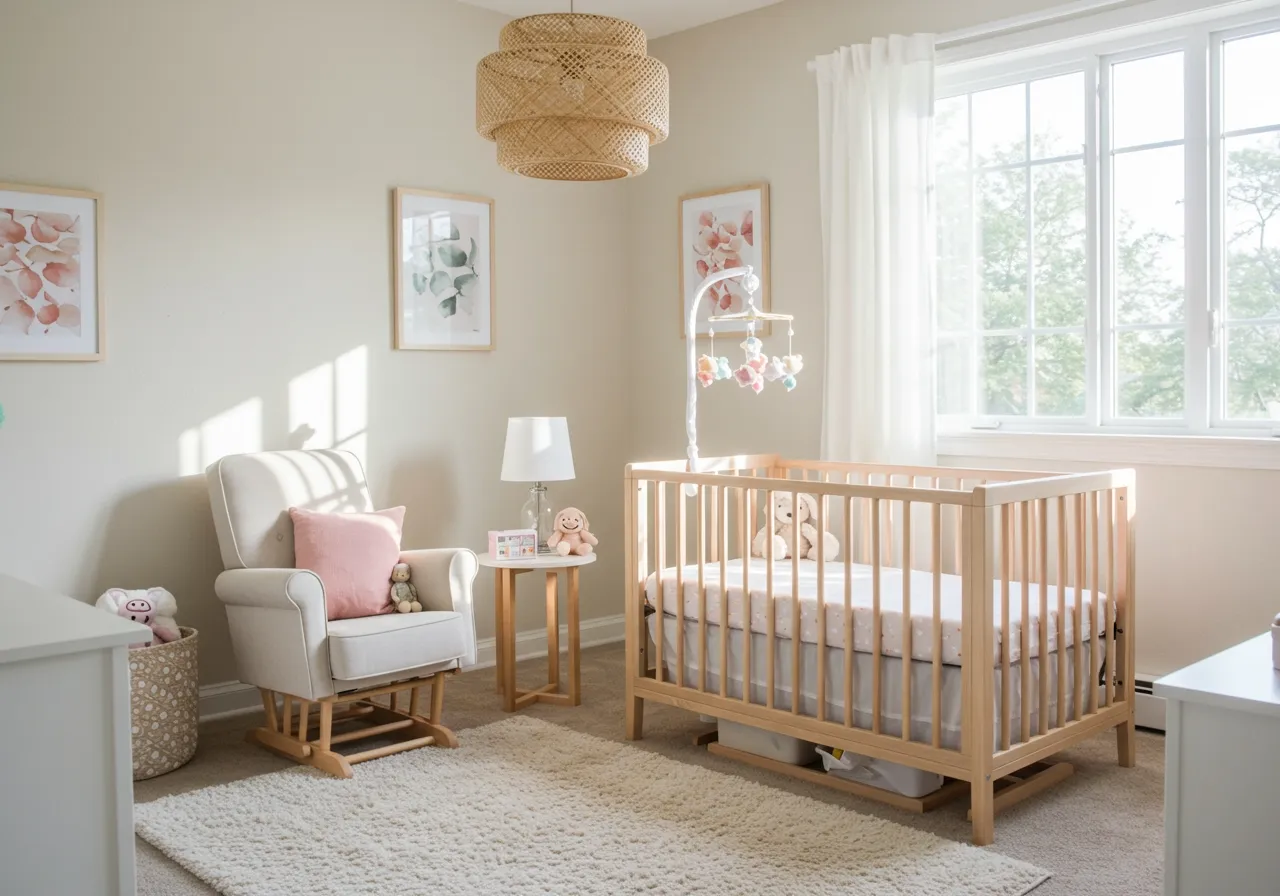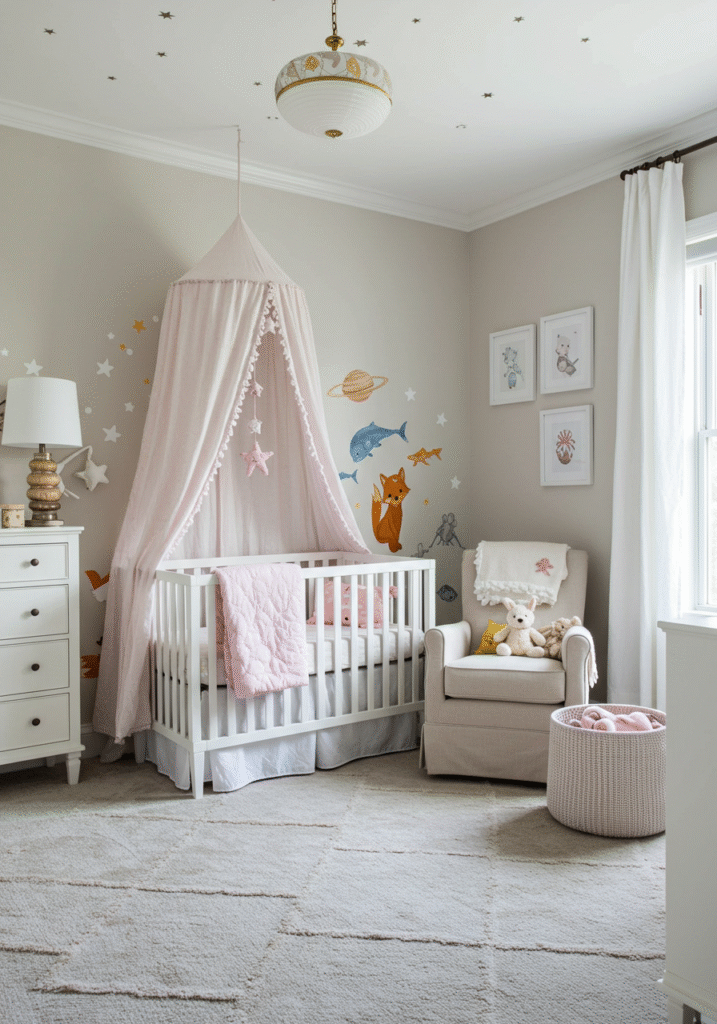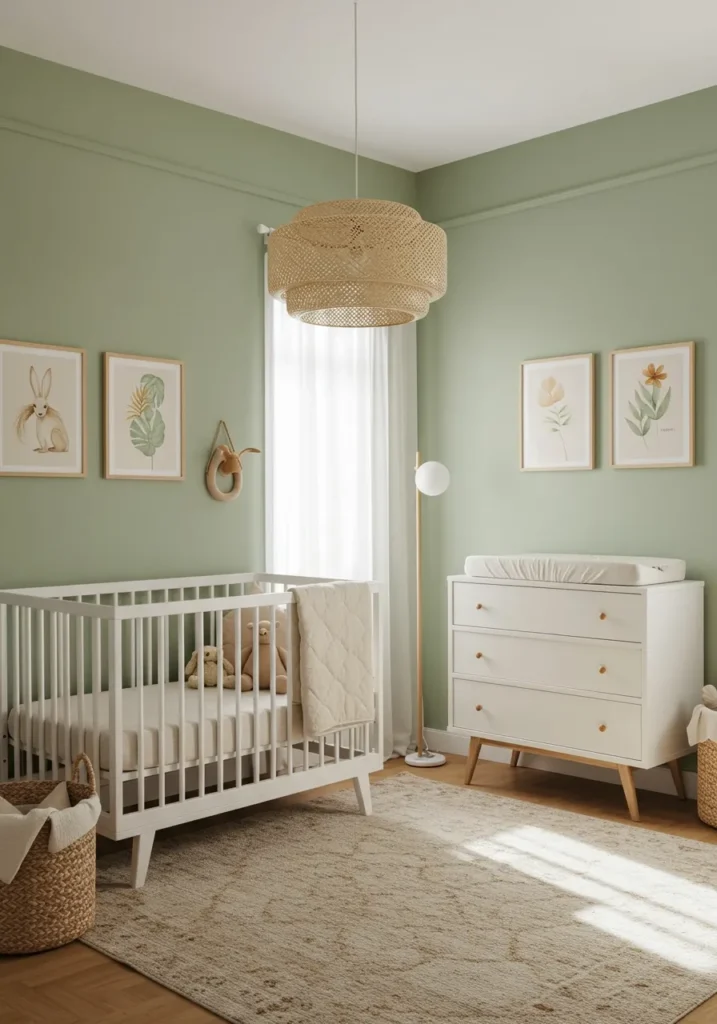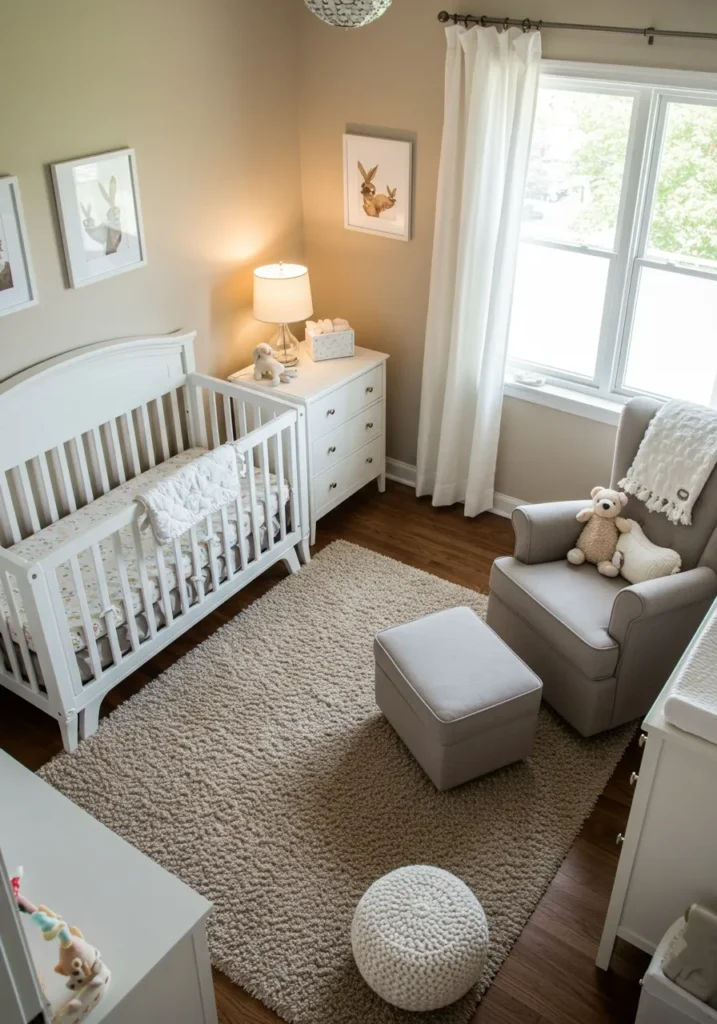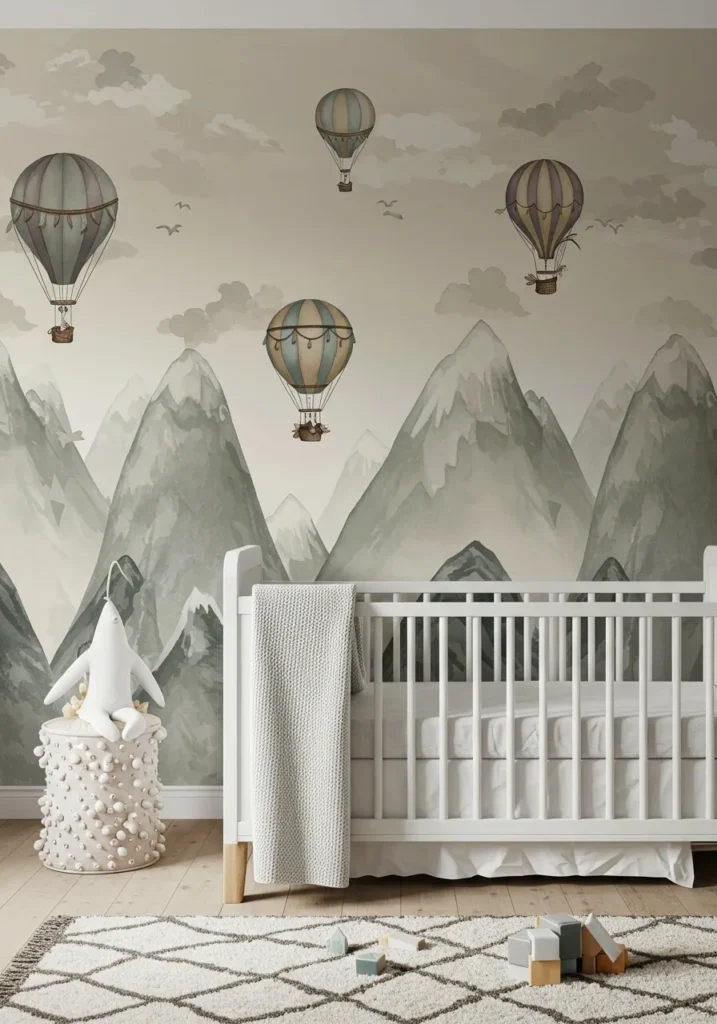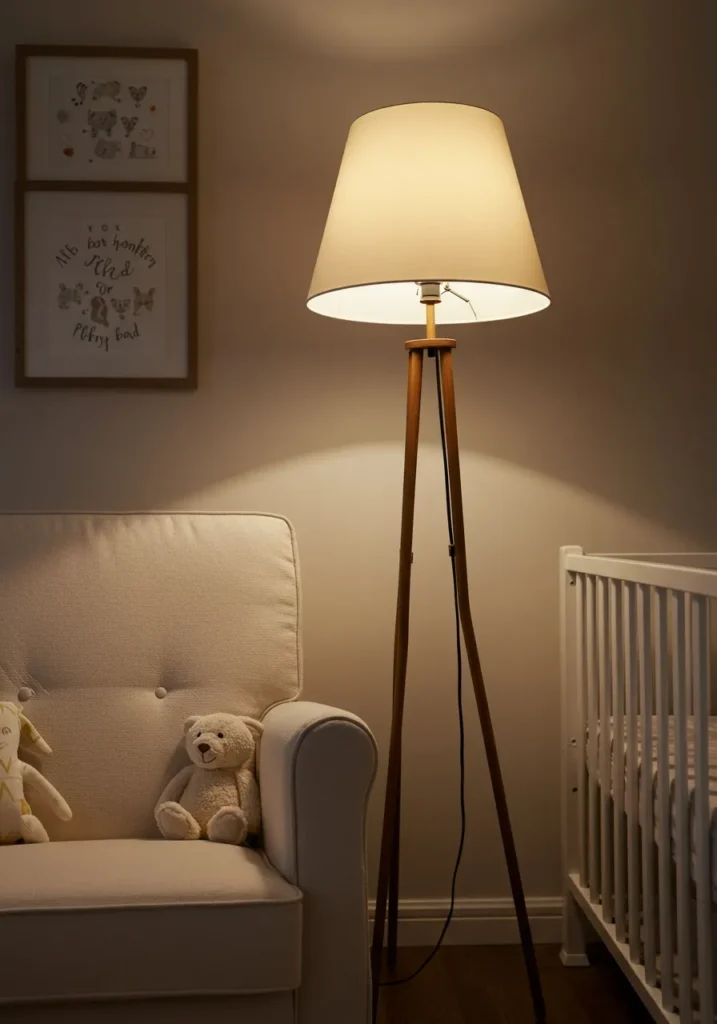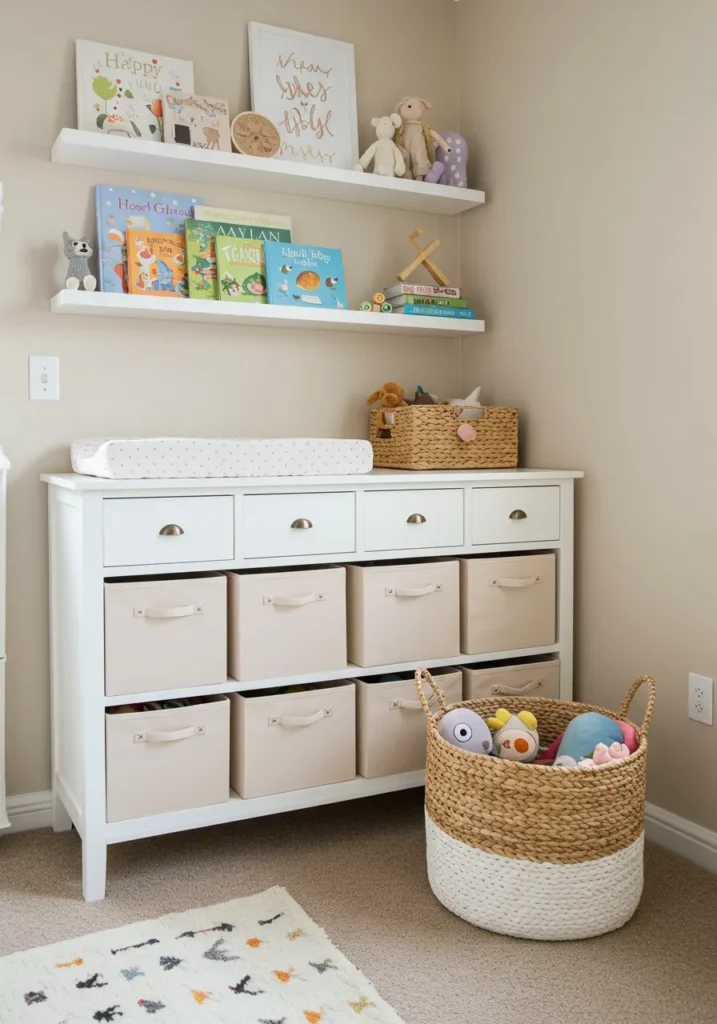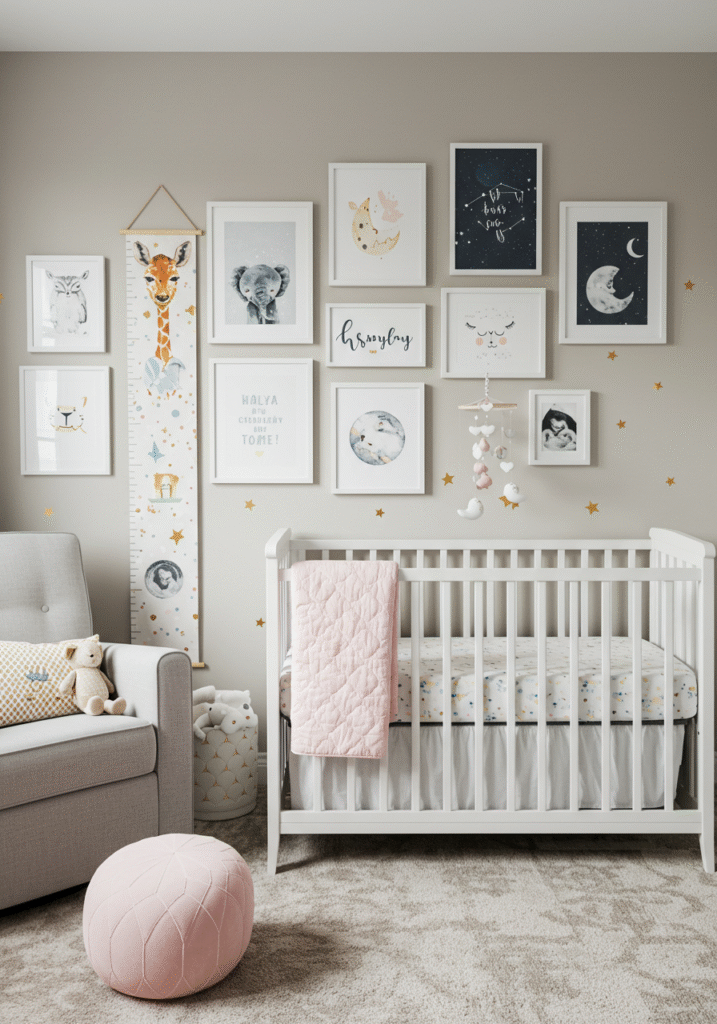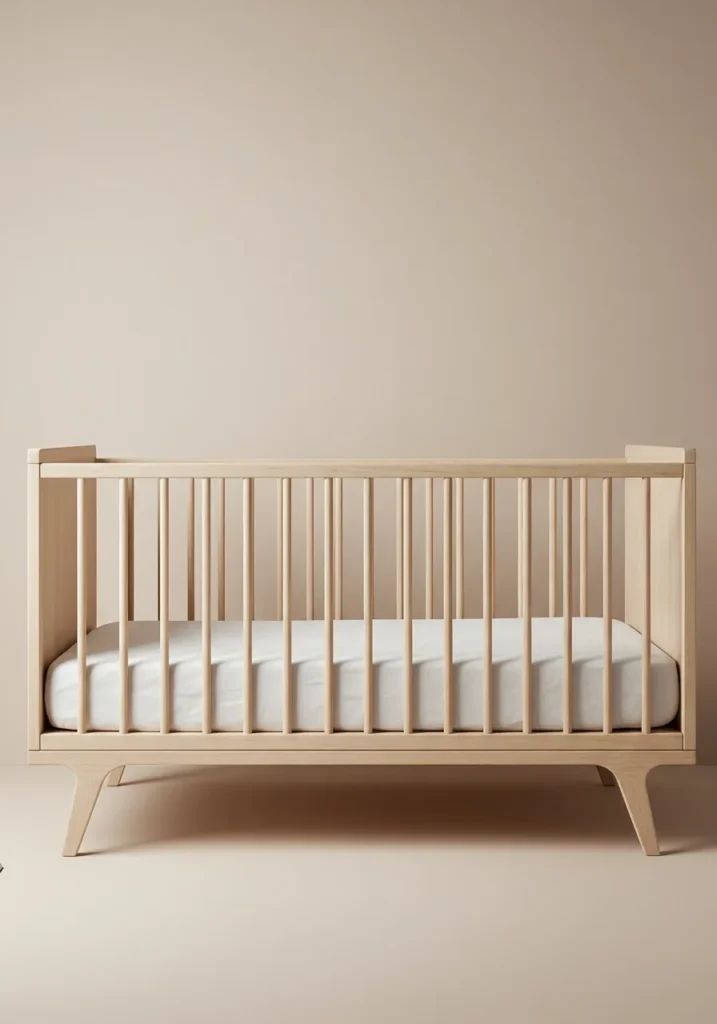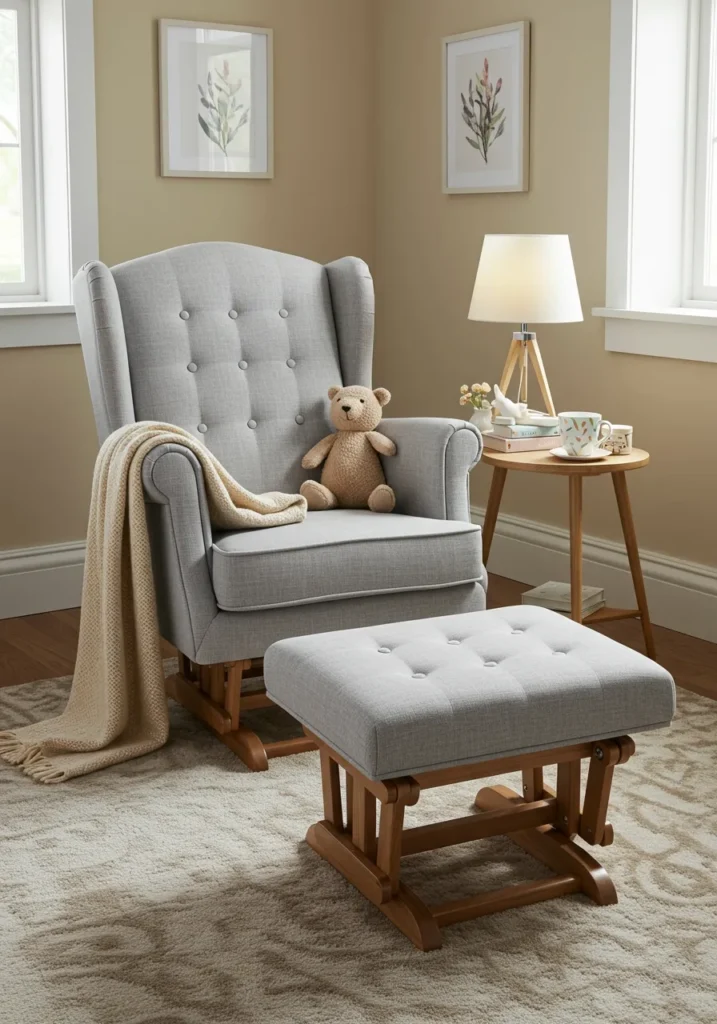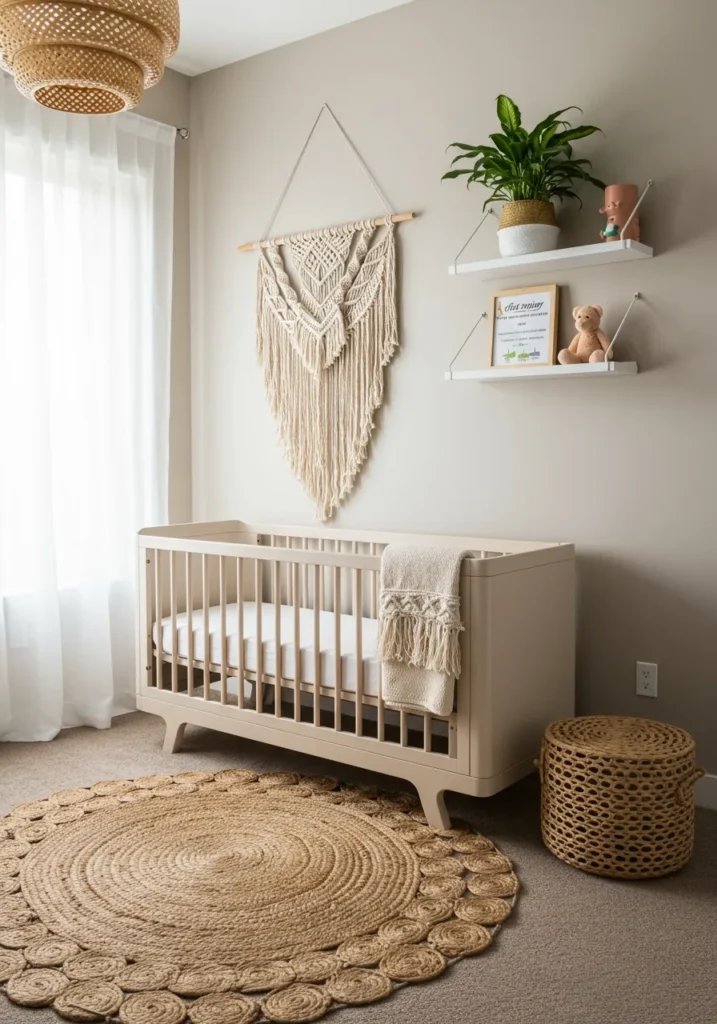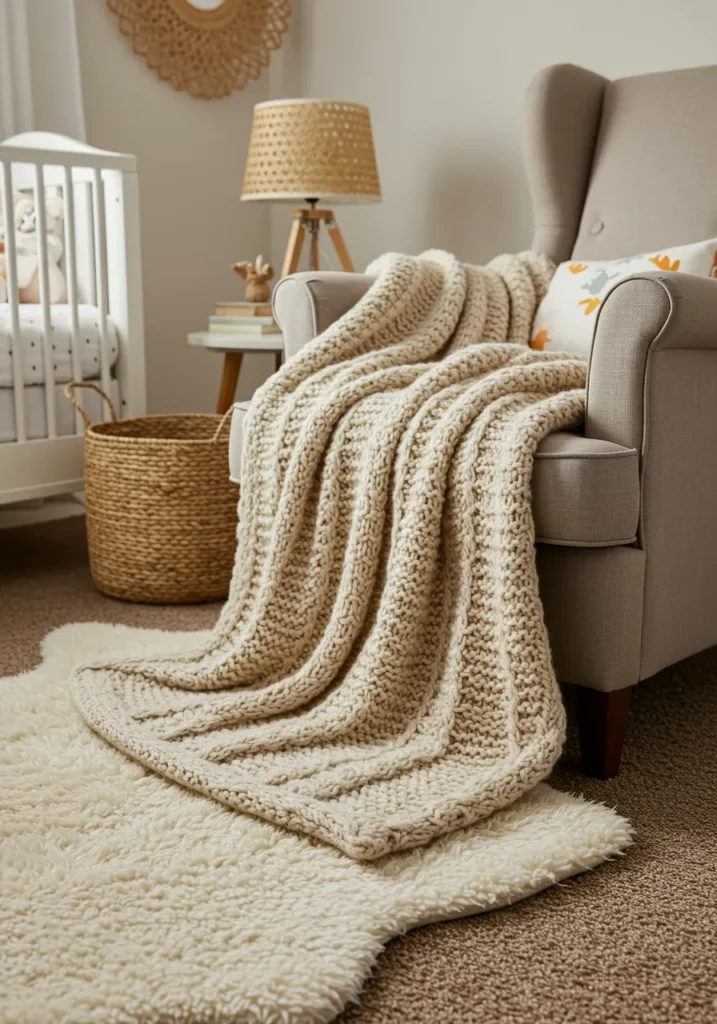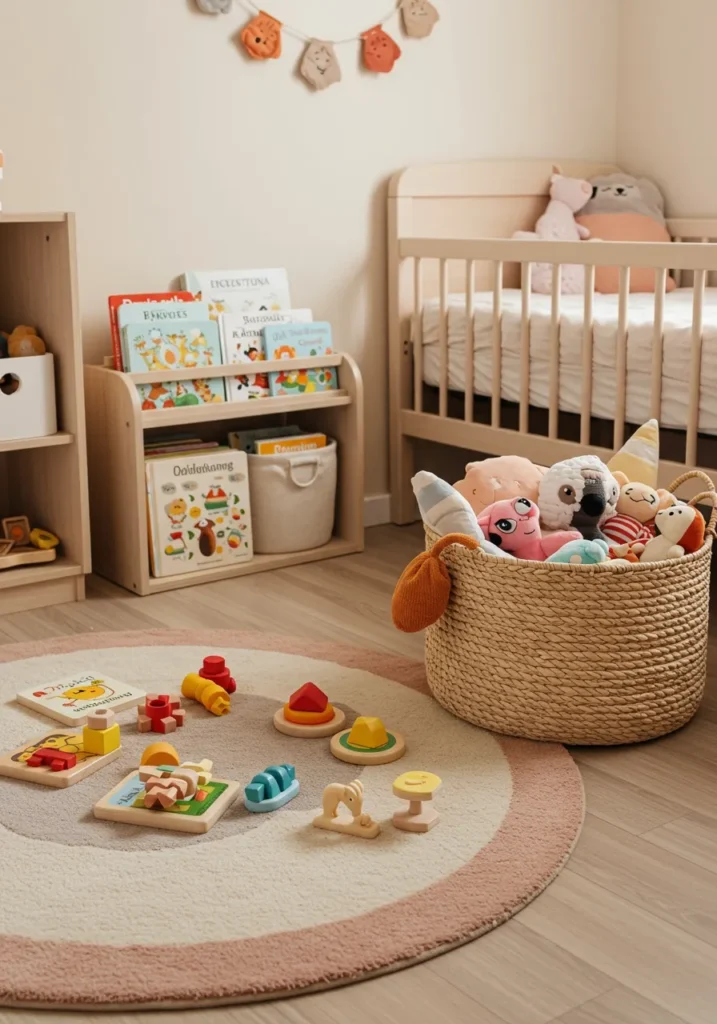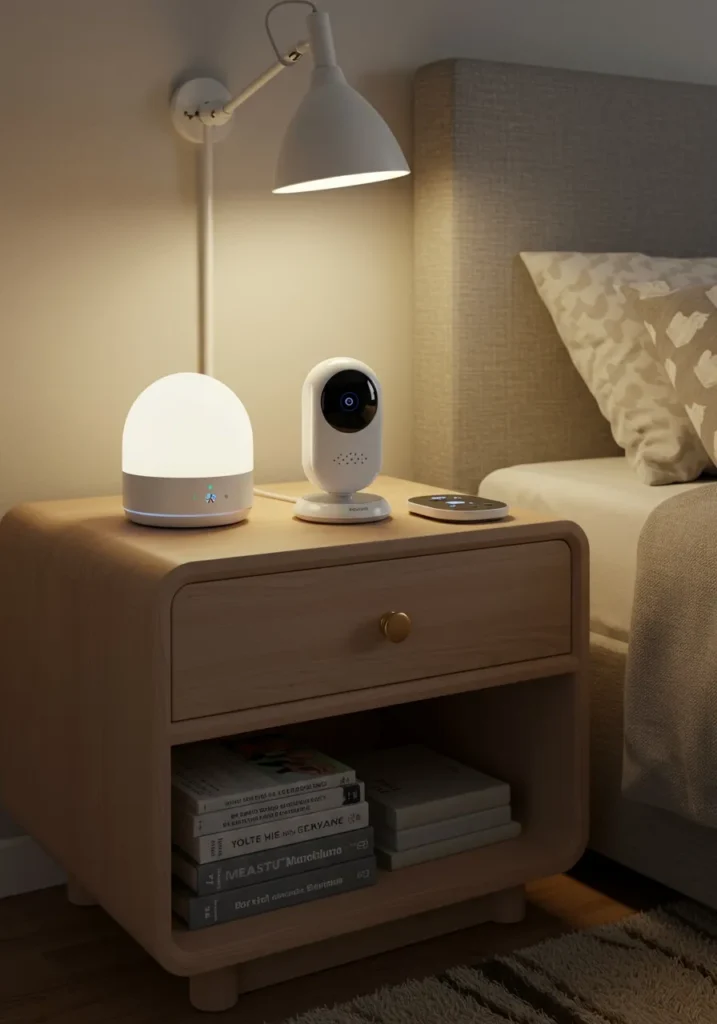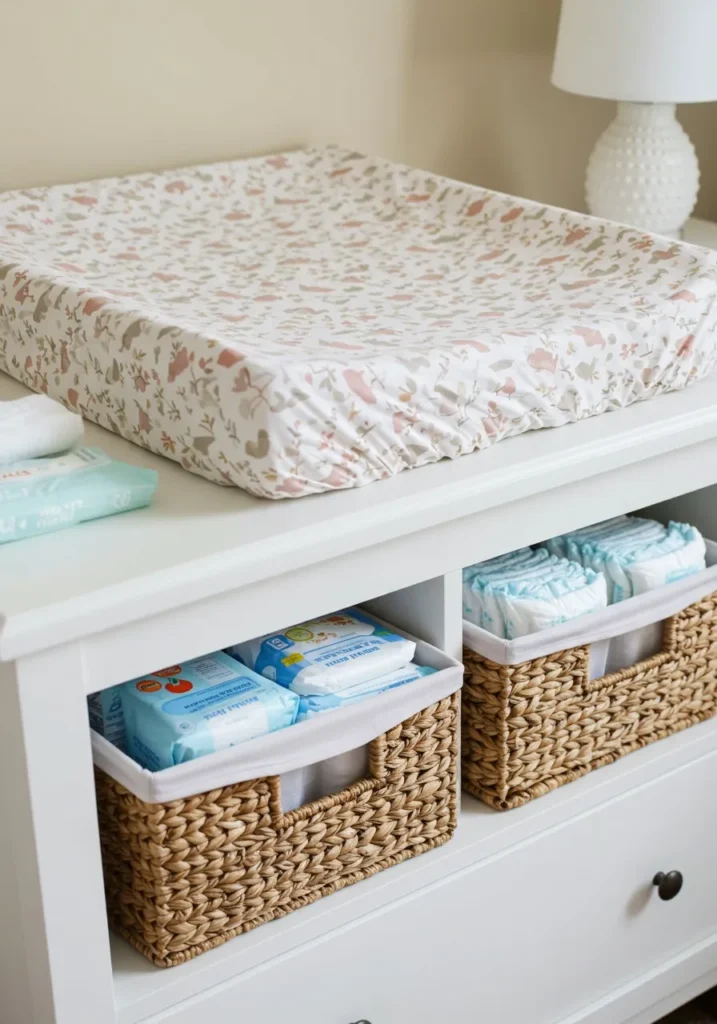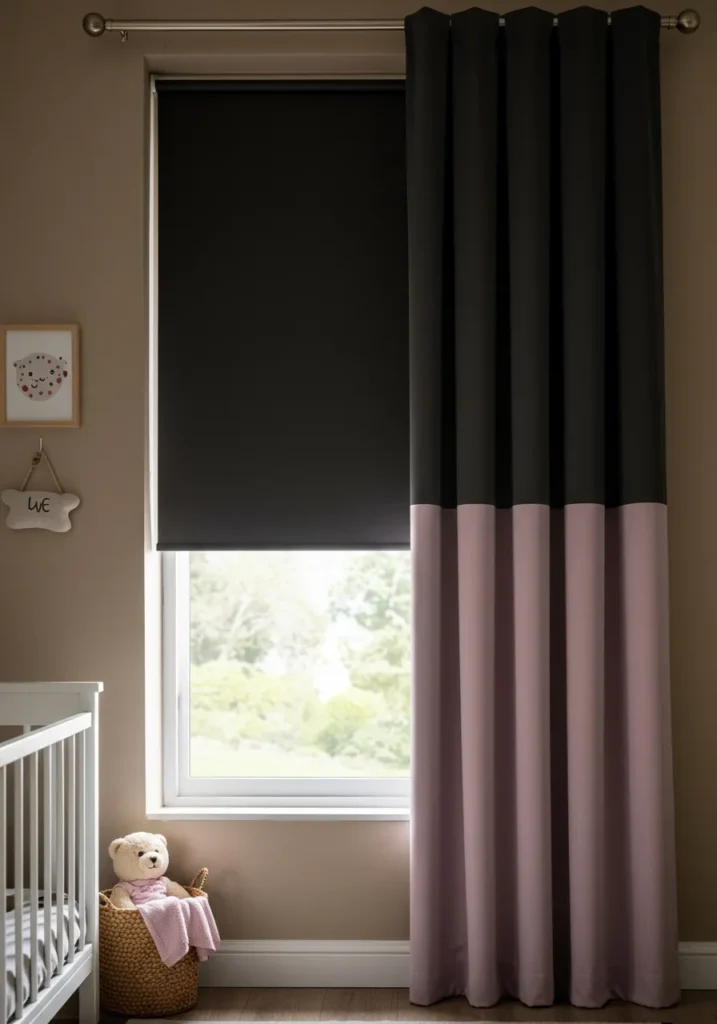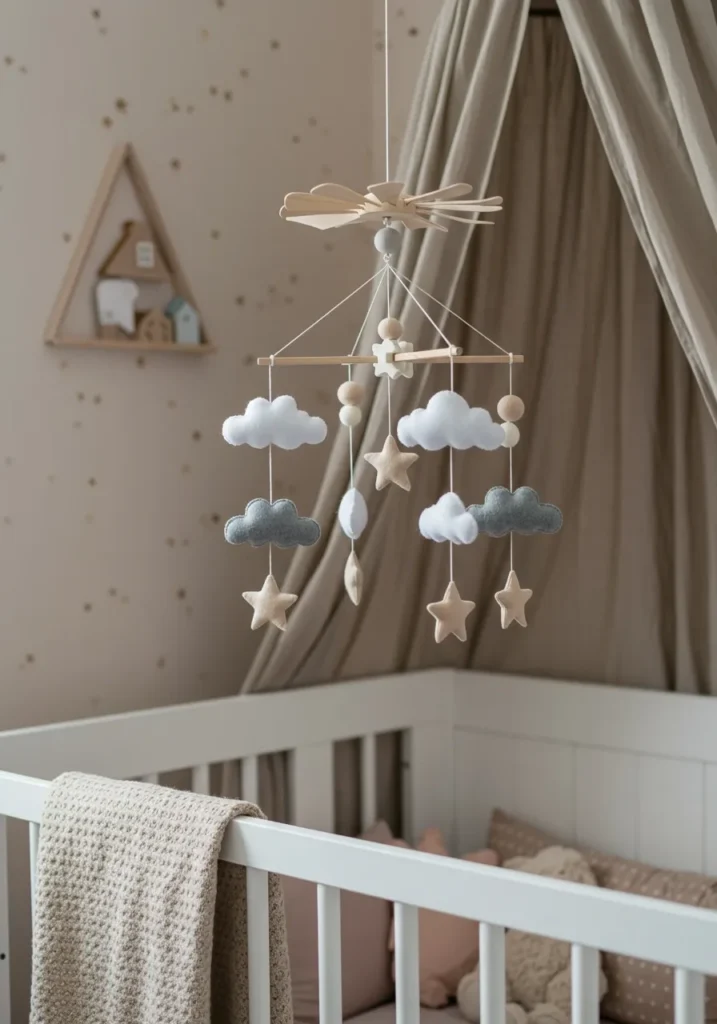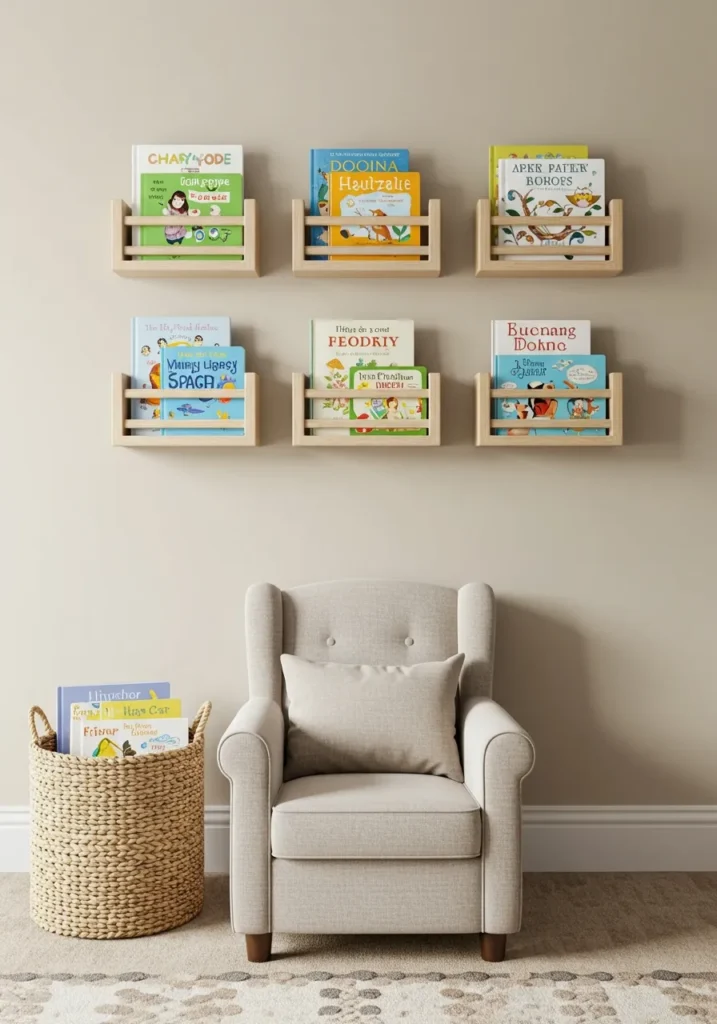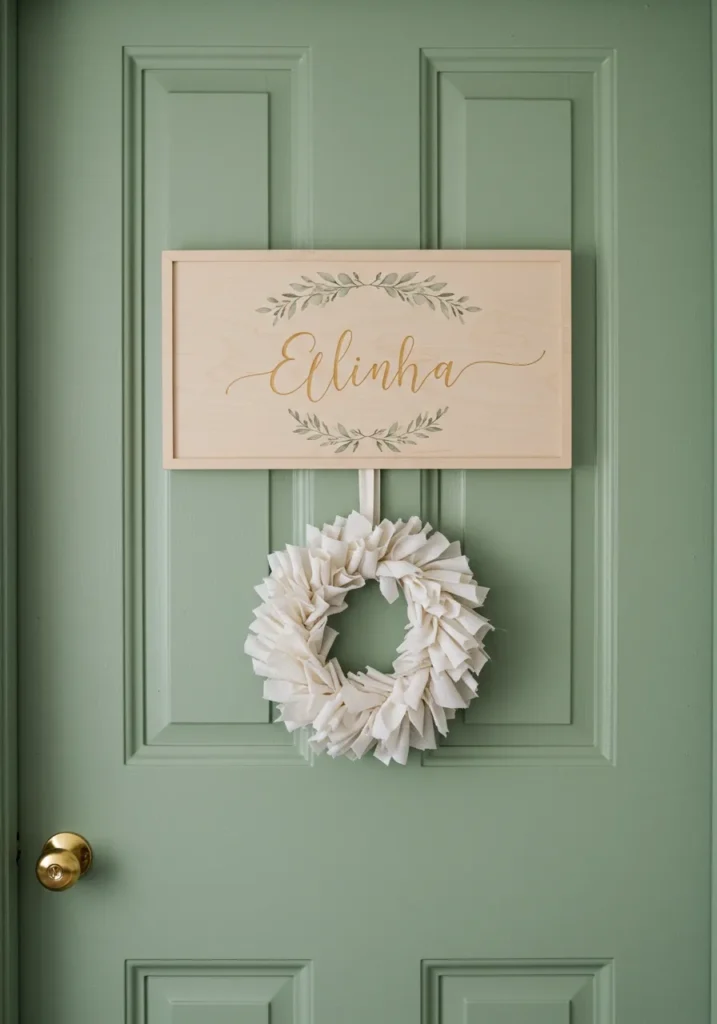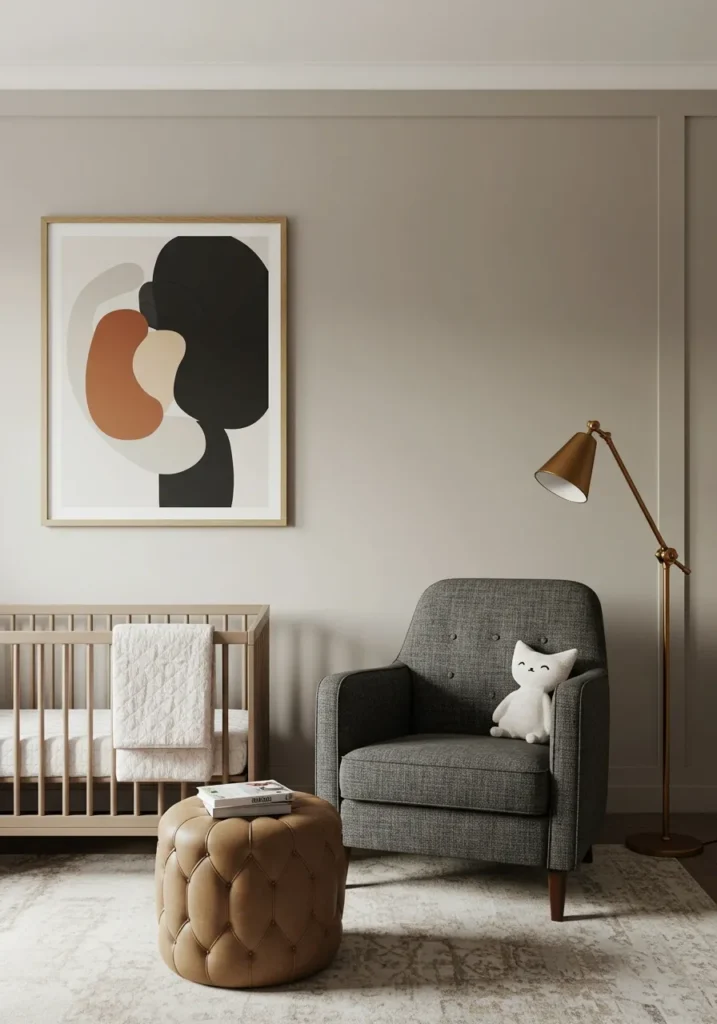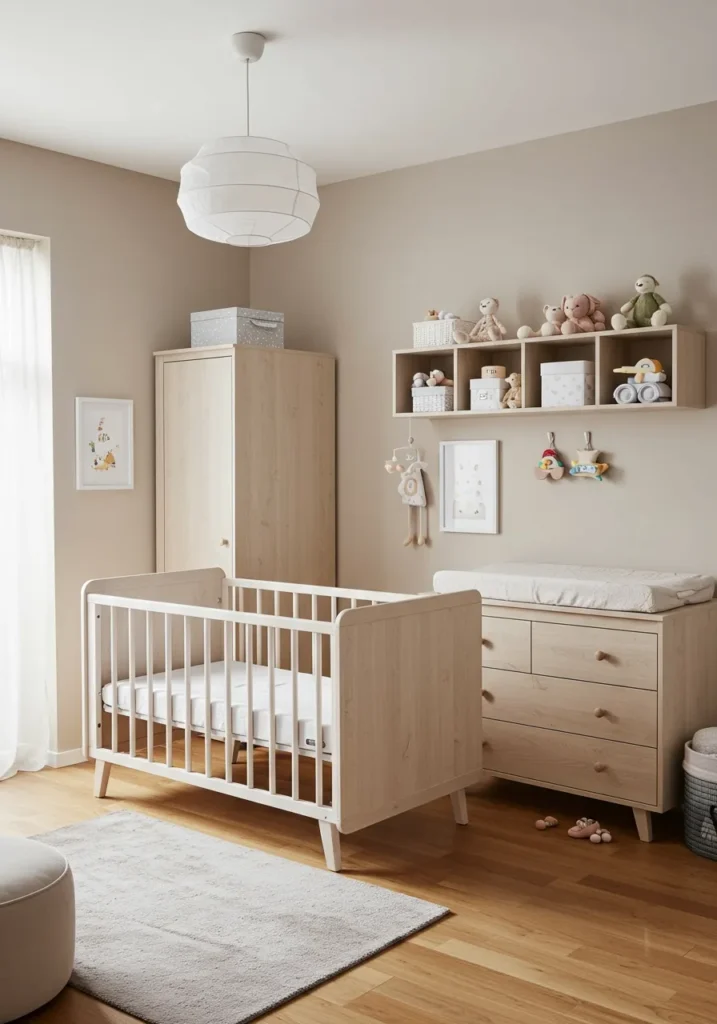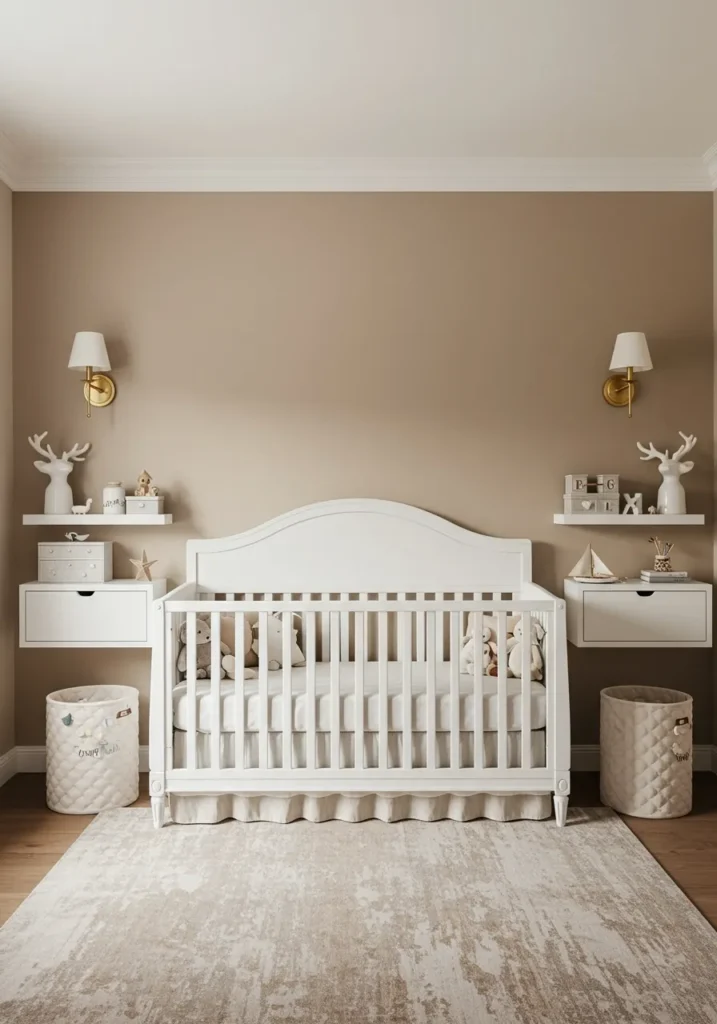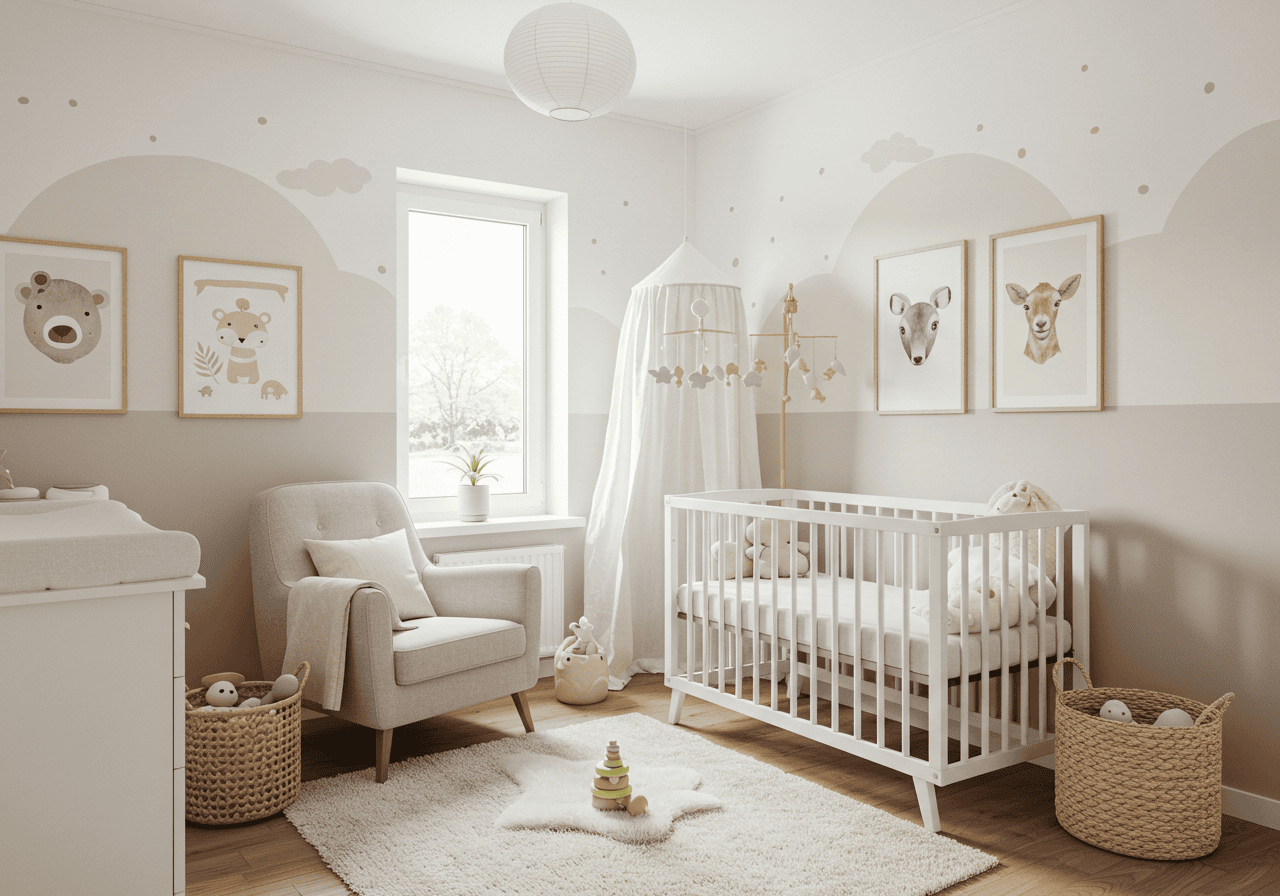The moment you discover you’re expecting, a whirlwind of emotions and excitement begins – and right at the top of that list is often the joyous task of designing your baby’s nursery! This isn’t just any room; it’s where countless cuddles will happen, first milestones will be celebrated, and precious memories will be made. It’s a space that needs to be as functional as it is enchanting, a true reflection of the love awaiting your little one.
But with so many adorable options out there, where do you even begin? Fret not, soon-to-be parents! We’ve gathered 21 of the most captivating nursery room inspirations, packed with unique insights, expert tips, and trending ideas to help you craft the perfect haven. Get ready to sprinkle some magic and create a space that’s safe, stylish, and utterly irresistible for your bundle of joy!
1. Embrace a Whimsical Theme
One of the most exciting first steps in designing your nursery is choosing a central theme! A well-chosen theme can tie the entire room together, creating a cohesive and enchanting atmosphere. Think beyond traditional pink and blue – the options are truly endless and can reflect your personal style or a delightful story you want to tell.
- Storybook Adventures: Imagine a Peter Pan-inspired room with a starry ceiling and whimsical wall decals, or a classic Winnie the Pooh theme with soft yellows and gentle forest creatures.
- Nature’s Serenity: Consider themes like a “woodland wonderland” featuring friendly foxes and bears, a “calming ocean” with gentle waves and sea life, or a “mountain escape” with rustic elements and evergreen accents.
- Starry Skies & Celestial Wonders: For a truly magical touch, an outer space or starry night theme can spark endless dreams, complete with glow-in-the-dark stars and planetary mobiles.
- Expert Tip: Choose a theme that can grow with your child or one that can be easily updated with accessories rather than permanent fixtures, ensuring longevity and flexibility in your design. For more inspiring ideas, check out our guide on how to approach your overall nursery room decor.
2. Master the Art of a Calming Color Palette
Colors have a profound impact on mood and atmosphere, making your palette choice incredibly important for a nursery. While vibrant colors can be stimulating, a calming palette is often preferred for promoting rest and tranquility for both baby and parent. Think soft, soothing shades that create a serene backdrop for all your design elements.
- Soothing Neutrals: Creams, soft grays, warm beiges, and muted whites offer a timeless and adaptable foundation. These colors can make a small room feel larger and brighter, providing a canvas for pops of color through decor.
- Gentle Pastels: Hues like dusty rose, mint green, sky blue, or lavender can introduce color without overwhelming the senses, offering a sweet and classic nursery feel.
- Earthy Tones: Incorporating sage green, terracotta, or muted mustard can bring a grounding, natural feel to the space, creating a cozy and inviting environment.
- Unique Insight: Research suggests that softer colors can aid in baby’s emotional development by creating a less stimulating environment, which is crucial for sleep and relaxation. If you love the idea of serene and understated elegance, explore these beautiful neutral nursery ideas.
3. Prioritize a Functional and Safe Layout
Beyond aesthetics, the functionality and safety of your nursery layout are paramount. A well-planned space ensures ease of use for parents, allows for smooth transitions during feeding and changing, and most importantly, provides a secure environment for your baby. Think of your nursery as a collection of zones designed for specific activities.
- The Sleep Zone: This area, centered around the crib, should be free from hanging cords, heavy shelves, or anything that could pose a hazard. Ensure easy access for placing and picking up your baby.
- The Changing Station: Position your changing table or dresser with a changing pad in a well-lit area, with all essentials (diapers, wipes, creams) within arm’s reach but out of baby’s grasp.
- The Feeding/Comfort Nook: A comfortable glider or rocking chair is a must-have for nighttime feedings and quiet bonding moments. Place it near a small table for drinks and a lamp for soft lighting.
- Safety First: Secure all furniture to the walls with anchor kits, ensure crib slats are spaced correctly, and cover electrical outlets. These small steps make a big difference in creating a worry-free space.
4. Design an Eye-Catching Statement Wall
A statement wall is a fantastic way to inject personality, depth, and a focal point into your nursery without overwhelming the entire space. It’s a creative opportunity to bring your chosen theme to life or simply add a touch of artistic flair that captures attention and sparks imagination.
- Bold Wallpaper: Choose a wallpaper with a captivating pattern – think whimsical animal prints, delicate florals, geometric shapes, or a serene landscape mural. It instantly elevates the room’s design.
- Hand-Painted Mural: For a truly personalized touch, commission or create a hand-painted mural. This could be anything from a dreamy night sky to a charming forest scene or abstract art in calming colors.
- Removable Decals: A versatile and commitment-free option, decals come in countless designs and are perfect for renters or those who like to change things up frequently.
- Textural Elements: Consider shiplap, board-and-batten, or even a wall covered in fabric for a unique tactile experience. These add architectural interest and a cozy feel.
- Trending Idea: Bohemian-inspired statement walls with woven tapestries or macrame hangings are increasingly popular, adding texture and warmth to the room, blending beautifully with other boho nursery decor elements.
5. Layer in Cozy and Functional Lighting
Lighting in a nursery is about much more than just brightness; it’s about creating a versatile atmosphere that caters to different needs throughout the day and night. Thoughtful lighting can soothe your baby, assist parents during nighttime routines, and enhance the overall warmth and coziness of the space.
- Ambient Lighting: Start with a soft overhead light, ideally on a dimmer switch. This provides general illumination without being harsh. Consider a decorative pendant light that complements your theme.
- Task Lighting: A floor lamp or table lamp next to your glider is essential for reading bedtime stories or discreetly checking on your baby without turning on the main light. Look for options with a warm glow.
- Night Lights: A subtle night light provides just enough illumination for middle-of-the-night changes or feedings without fully waking your baby. Opt for designs that cast soft, diffused light, perhaps with a gentle animal shape or starry projection.
- Natural Light: Maximize natural light during the day, but ensure you have blackout curtains or blinds for nap times and early mornings. This is crucial for regulating your baby’s sleep schedule.
- Expert Tip: Choose warm-toned bulbs (around 2700K-3000K) over cool-toned ones to promote relaxation and a cozy feel.
6. Smart Storage Solutions are Your Best Friend
A beautiful nursery is wonderful, but a functional and organized one is a lifesaver for busy parents! Babies come with a surprising amount of gear, from tiny onesies to countless diapers and an ever-growing collection of toys. Implementing smart storage solutions from the outset will save you headaches down the line and keep the room looking tidy and serene.
- Vertical Storage: Utilize wall space with floating shelves for books and decor, or wall-mounted baskets for smaller items. This keeps floors clear and makes use of often-forgotten areas.
- Drawer Dividers & Organizers: Inside dressers and changing tables, use drawer dividers to keep clothes, socks, and essentials neatly separated and easy to find.
- Baskets & Bins: Stylish baskets made from woven natural fibers, felt, or canvas are perfect for corralling toys, blankets, and dirty laundry. They add texture and are easily accessible.
- Under-Crib Storage: Some cribs come with built-in drawers, or you can use slim rolling bins to store extra bedding or out-of-season clothes underneath.
- Expert Tip: Think about the flow of activities. Store changing supplies right at the changing station, sleep essentials near the crib, and toys in a designated play zone.
7. Add Personal Touches with Wall Art & Decor
Once the big pieces are in place, it’s time to infuse the nursery with personality and charm through thoughtfully chosen wall art and decor. These elements are where your chosen theme truly shines, creating visual interest and a cozy, inviting atmosphere that reflects your family’s style.
- Themed Artwork: Select prints or canvases that tie into your nursery’s theme – whether it’s whimsical animals, celestial motifs, or gentle abstract art. Gallery walls with varying sizes and frames can add a dynamic touch.
- Mirrors: A well-placed mirror can make a small room feel larger and brighter. Choose a stylish, child-safe mirror with a sturdy frame, ensuring it’s securely mounted.
- Growth Charts: A charming growth chart isn’t just decor; it’s a keepsake that will capture your child’s milestones for years to come. Look for wooden, canvas, or decal options.
- Personalized Elements: Incorporate your baby’s name with custom letter art, a personalized mobile, or framed sonogram photos for a deeply personal touch.
- Unique Insight: Wall decor isn’t just for adults! Babies are fascinated by high-contrast patterns and faces. Position some art at their eye level (from the crib) for early visual stimulation. For more unique ideas, browse through various nursery room ideas available.
8. Choose the Right Crib and Mattress for Safety and Comfort
The crib is undoubtedly the centerpiece of any nursery, serving as both a design anchor and, most importantly, your baby’s safe sleep space. Investing in a high-quality, safe crib and a firm mattress is paramount for your little one’s well-being and your peace of mind.
- Safety Standards: Always ensure the crib meets current safety standards (e.g., CPSC standards in the US). Look for certifications and avoid older, hand-me-down cribs that may not meet modern regulations.
- Convertible Cribs: Many cribs today are designed to convert into a toddler bed, daybed, and even a full-size bed, offering excellent value and longevity as your child grows.
- Mattress Firmness: A firm mattress is crucial for infant safety, reducing the risk of SIDS. It should fit snugly into the crib with no gaps around the edges where a baby could get trapped.
- Style & Material: Cribs come in a vast array of styles, from modern minimalist to classic ornate, and materials like solid wood, metal, or acrylic. Choose one that complements your overall nursery aesthetic.
- Expert Tip: Assemble the crib well in advance of your baby’s arrival to ensure all parts are present and securely fastened. Double-check all bolts and screws periodically.
9. Invest in a Comfortable Glider or Rocker
Beyond the crib, a comfortable glider or rocking chair is perhaps the most essential piece of furniture in a nursery, primarily for parents. This dedicated spot will be where you spend countless hours feeding, soothing, reading, and bonding with your baby. Comfort is key!
- Smooth Motion: Look for a glider with a smooth, silent glide or rock, and ideally a swivel function, allowing you to easily reach items or shift positions without disturbing your baby.
- Support & Comfort: Padded armrests, a high back for head support, and a comfortable seat cushion are non-negotiable. An accompanying ottoman for leg support adds to the comfort level.
- Fabric Choice: Consider durable, easy-to-clean fabrics, especially those treated for stain resistance. Neutral colors are practical and can transition easily to other rooms later.
- Ergonomics: Test out chairs in person if possible to ensure it fits your body comfortably and provides good lumbar support, especially if you anticipate long hours here.
- Unique Insight: The glider can also serve as a quiet retreat for parents, a comfortable spot for reading, or even a future seating option in a child’s bedroom or living area.
10. Bring in Natural Elements for a Serene Touch
Connecting with nature brings a sense of calm and tranquility, and incorporating natural elements into the nursery can create a beautifully serene and grounding atmosphere. These organic touches add warmth, texture, and a touch of the outdoors, promoting a peaceful environment.
- Wood Accents: Opt for furniture pieces like cribs, dressers, or shelves made from natural wood tones (light birch, warm oak, or even darker walnut) to add organic beauty.
- Woven Textures: Introduce baskets, rugs, mobiles, or light fixtures made from materials like rattan, jute, bamboo, or seagrass. These add tactile interest and an earthy feel.
- Linen & Cotton: Choose bedding, curtains, and throw blankets made from breathable, natural fibers like organic cotton or linen for a soft, inviting feel and a touch of understated elegance.
- Safe Greenery: If you choose to include plants, select non-toxic varieties and place them out of reach of tiny hands. Examples include spider plants, Boston ferns (hang them!), or prayer plants. Faux plants are also a great, safe alternative.
- Expert Tip: Combine different natural textures to create depth and visual interest without relying on strong colors. This often pairs beautifully with bohemian or neutral themes.
11. Play with Textures to Create Depth and Warmth
Texture is a powerful, often underestimated, design tool that can transform a flat space into a rich, inviting haven. By layering different textures, you can add depth, warmth, and sensory interest, making the nursery feel cozy and stimulating for your baby’s developing senses.
- Plush Rugs: A soft, thick rug beneath the crib or in the play area provides a cushioned surface for playtime and adds a significant layer of warmth and comfort.
- Soft Throws & Blankets: Drape a faux fur throw over the glider or neatly fold a chunky knit blanket over the crib railing (when not in use) to invite snuggles and add visual softness.
- Woven Elements: Beyond rugs, consider woven storage baskets, macrame wall hangings, or even textured wallpaper with subtle patterns to introduce tactile interest.
- Curtains & Drapes: Heavy linen or velvet curtains can add a luxurious texture, enhance light control, and improve sound absorption, making the room quieter.
- Unique Insight: Babies learn a lot through touch. Introducing a variety of soft, safe textures can be a subtle form of sensory play within their environment.
12. Create an Inviting and Safe Play Area
As your baby grows, the nursery won’t just be for sleeping and changing; it will also become a vital space for play and discovery. Designating a specific, safe play area encourages exploration and makes it easy to keep toys organized.
- Soft Flooring: A large, plush rug or interlocking foam play mats provide a cushioned, comfortable surface for tummy time, crawling, and eventually walking.
- Accessible Storage: Place toy baskets or low shelves within easy reach for your child as they get older, encouraging independence and helping them put toys away.
- Age-Appropriate Toys: Stock the area with a variety of safe, age-appropriate toys that stimulate different senses and encourage developmental milestones.
- Safety Zone: Ensure the play area is clear of any hazards, has secure furniture, and is well-supervised. Consider a soft playpen for contained playtime if needed.
- Expert Tip: Rotate toys periodically to keep things fresh and engaging, and avoid overwhelming the space with too many options at once.
13. Warm Minimalism for the Modern Nursery
Creating a nursery that is both a peaceful sanctuary and a hub of modern convenience can be a design challenge. This approach masters the balance by pairing the clean lines and natural materials of Scandinavian design with the latest smart technology, proving that a child’s room can be as stylish as it is functional.
- Why it works: This design masterfully blends high-tech functionality with soft, organic aesthetics. The warm, light wood of the nightstand and the soft, neutral textiles create a calming and grounded atmosphere. Against this serene backdrop, essential technology like the baby monitor and smart nightlight integrate seamlessly, their minimalist white forms complementing the decor rather than disrupting it.
- Design Tip: Implement a layered lighting scheme. Combine a soft, ambient glow from a dimmable nightlight for restful nights with a focused, adjustable task lamp for reading or late-night care. Using warm-toned bulbs throughout will maintain a cozy and sleep-conducive environment.
- Expert Insight: Prioritize furniture with soft, rounded edges. Not only does this contribute to a gentle, contemporary look, but it’s also a crucial safety feature in a room for a little one. Choose pieces with both open and closed storage to keep essentials handy while tucking away clutter. Find more inspiration in our guide to modern nursery design ideas.
14. Don’t Forget the Changing Table Essentials
The changing station will be one of the most frequently used spots in your nursery, so making it highly functional and well-stocked is crucial for efficiency and hygiene. Having everything you need within arm’s reach makes diaper changes quicker and less stressful.
- Diapers & Wipes: Keep a generous supply of both readily accessible. Consider a stylish caddy or dispenser for wipes and a stack of fresh diapers.
- Creams & Lotions: Have diaper cream, baby lotion, and any other necessary skin care products neatly organized in a tray or small container.
- Extra Outfits: Accidents happen! Keep a couple of clean onesies or outfits in a drawer or basket near the changing area for quick changes.
- Changing Pad Covers: Stock up on several soft, waterproof changing pad covers for easy washing and hygiene.
- Distraction Elements: A small mobile, a hanging toy, or a framed picture above the changing table can provide a much-needed distraction for a squirmy baby during changes.
- Expert Tip: Never leave your baby unattended on the changing table, even for a second. Always keep one hand on them.
15. Use Blackout Curtains for Optimal Sleep
For a baby’s developing sleep schedule, controlling the light in the nursery is incredibly important. Blackout curtains are a non-negotiable item for creating a dark, conducive sleep environment, helping both daytime naps and nighttime sleep.
- Promote Deeper Sleep: A dark room signals to a baby’s body that it’s time for rest, helping them fall asleep faster and stay asleep longer, especially crucial for naps.
- Regulate Sleep Cycles: By blocking out morning light, blackout curtains can help prevent early waking and assist in establishing a consistent sleep routine.
- Temperature Control: Thicker blackout curtains also offer insulation, helping to keep the room cooler in summer and warmer in winter, contributing to overall comfort.
- Style Options: Don’t think blackout curtains have to be boring! They come in a wide range of colors, patterns, and textures that can complement your nursery’s decor.
- Installation Tip: Ensure the curtains extend beyond the window frame on all sides and are mounted high and wide to prevent light leakage. Consider adding blackout blinds underneath for extra coverage.
16. Style with a Soothing Mobile
A crib mobile is more than just a decorative accent; it’s a source of early visual stimulation and a soothing focal point for your baby. Choosing the right mobile can add a delightful touch of whimsy and encourage quiet observation.
- Visual Stimulation: Babies are fascinated by movement and contrasting colors. A mobile with gentle shapes, animals, or stars rotating above the crib can capture their attention and encourage eye tracking.
- Soothing Function: Many mobiles come with soft music or white noise features, which can help calm your baby and prepare them for sleep.
- Thematic Harmony: Select a mobile that complements your nursery’s overall theme and color palette, integrating seamlessly into the design.
- Safety First: Always ensure the mobile is securely attached to the crib or ceiling and placed out of your baby’s reach (at least 12-18 inches above their head). Remove it once your baby can push up on hands and knees or reaches 5 months old, as it can become a safety hazard.
- Expert Tip: Look for mobiles with a variety of textures and shapes to keep your baby engaged as they develop.
17. Add a Bookshelf for Early Reading Adventures
Fostering a love for reading can start even before your baby understands words. A dedicated bookshelf in the nursery not only adds a lovely decorative element but also makes books accessible, encouraging early literacy and sweet bonding moments.
- Front-Facing Shelves: Low, front-facing shelves (like picture ledges) are ideal for babies and toddlers. They allow children to see the book covers, making it easier for them to choose books independently as they grow.
- Classic Books: Curate a collection of classic board books, touch-and-feel books, and vibrant picture books that will become cherished favorites.
- Reading Nook Integration: Place the bookshelf near your glider or a comfortable floor cushion to create an inviting reading nook where you can snuggle up and read together.
- Storage & Display: Besides books, shelves can also display small, safe decor items like stuffed animals, small wooden toys, or framed photos.
- Unique Insight: Reading aloud to your baby from an early age not only introduces them to language and stories but also provides a precious opportunity for one-on-one connection and warmth.
18. Consider the Nursery Door as Part of the Decor
Don’t overlook the nursery door! While often an afterthought, the door offers another opportunity to add a personal touch and integrate with the overall theme of the room. It’s the first impression when entering and can be a delightful detail.
- Personalized Sign: A charming custom sign with your baby’s name or a sweet message is a classic touch. Wooden, knitted, or painted signs all work beautifully.
- Whimsical Decals: Apply a cute decal to the door – maybe a sleeping animal, a moon and stars, or a gentle floral pattern – to hint at the magic within.
- Decorative Wreath: A soft, fabric wreath, a natural floral wreath, or even a simple macrame hanging can add a welcoming touch to the outside of the door.
- Muted Paint Color: If your door is currently stark white, consider painting it a soft, muted color that complements the nursery’s interior palette for a cohesive look.
- Practicality: Remember to keep decor secure and avoid anything that could make noise or get caught when opening/closing the door.
19. Reflect Your Style – It’s Your Home Too!
While the nursery is for your baby, it’s also a part of your home and a space where you’ll be spending a significant amount of time. Don’t be afraid to infuse your personal aesthetic and design preferences into the room. This makes the space feel more authentic and comfortable for you.
- Integrate Existing Pieces: Do you have a beloved armchair that could be reupholstered, or a vintage dresser that could be repurposed as a changing table? Mixing new and old adds character.
- Color Confidence: If you prefer bolder colors in your home, consider using them as accents in the nursery rather than primary wall colors, or choose more saturated versions of calming hues.
- Art & Photography: Display art that you genuinely love, whether it’s abstract pieces, nature photography, or illustrations that resonate with you, alongside baby-specific decor.
- Your Comfort: Ensure the glider, lighting, and overall layout are comfortable and convenient for you as a parent. A happy parent makes for a happy baby.
- Unique Insight: A nursery that reflects your style feels less like a temporary baby zone and more like an integrated, cherished part of your family home, making you more relaxed and present. To see how others have incorporated their flair, check out general ideas for nursery decor.
20. Prepare for Growth: Design with Flexibility in Mind
Babies grow incredibly fast, and what works for a newborn might not suit a curious toddler. Designing the nursery with future growth in mind allows for easier transitions, saves you money in the long run, and ensures the room remains functional and appealing for years to come.
- Convertible Furniture: As mentioned, a convertible crib is a smart investment. Similarly, a dresser that can function as a changing table can transition into a regular dresser later.
- Timeless Foundation: Choose neutral wall colors and larger furniture pieces in classic styles. You can always update the theme and feel of the room with smaller, easily changeable decor items.
- Flexible Storage: Opt for versatile storage solutions like open shelving, large bins, and modular units that can adapt to different types of toys and clothes as needs change.
- Dual-Purpose Items: A comfortable armchair can become a reading chair in a child’s bedroom or even move to another room in the house. A decorative rug can serve as a play mat now and an accent rug later.
- Expert Tip: Think about long-term functionality. Will that cute baby mobile still be safe and appropriate for a standing toddler? If not, ensure it can be easily removed or replaced.
21. The Power of Symmetry for Calm and Balance
While not always strictly necessary, incorporating elements of symmetry into your nursery design can create a profound sense of calm, balance, and order. This visual harmony can contribute to a more restful and peaceful environment for both baby and parent.
- Crib as Focal Point: Place the crib centrally on a wall, and then arrange elements symmetrically around it. This could mean two matching shelves on either side, or two identical pieces of art.
- Matching Nightstands/Side Tables: If you have space for a larger glider, consider placing two small, matching side tables on either side, each with a lamp, to create a balanced reading nook.
- Window Treatments: Matching curtains or blinds on either side of a window create a sense of order and balance in the room.
- Paired Decor: Use pairs of similar decorative items – two identical plush animals on a shelf, two matching throw pillows on the glider, or two identical wall sconces.
- Unique Insight: The human brain naturally finds symmetry appealing and reassuring. In a space meant for comfort and security, this subtle design technique can enhance the overall feeling of peace.
Creating your baby’s nursery is a journey filled with love, anticipation, and creativity. By focusing on themes that inspire, palettes that soothe, and practical solutions that ease daily life, you’re not just decorating a room – you’re building a sanctuary. We hope these 21 inspirations spark your imagination and help you craft a space that feels utterly perfect for welcoming your little one home!

